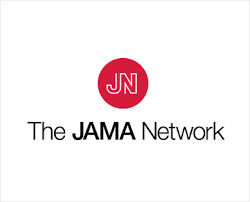Study: Racial, insurance disparities persist in access to buprenorphine after opioid-related events
Editor's Note
Black and Hispanic patients remain significantly less likely than White patients to receive buprenorphine after an opioid-related health care event, according research published June 26 in JAMA Network Open. Patients with Medicaid or Medicare Advantage also had higher odds of receiving buprenorphine than those with commercial insurance.
The cohort study analyzed 176,997 opioid-related events from 2017 to 2022 using a multipayer claims database that includes records from over 130 million individuals but focused on a subset of insured adults with recent opioid-related events. Patients were included if they had continuous insurance enrollment for at least 180 days prior to and 30 days after an index event, which could include nonfatal overdose, injection-related infection, or inpatient detoxification. Methadone was excluded due to limited availability in claims data.
Among all events analyzed, 19.3% resulted in buprenorphine treatment within 180 days, and 3.7% in naltrexone treatment. Adjusted estimated probabilities of buprenorphine receipt were 20.5% (95% CI, 16.4%-24.7%) for White patients, 17.1% (95% CI, 13.0%-21.1%) for Black patients, and 16.2% (95% CI, 11.6%-20.8%) for Hispanic patients. Compared with White patients, Black patients had an adjusted odds ratio (AOR) of 0.75, and Hispanic patients had an AOR of 0.69 for receiving buprenorphine. The adjusted risk differences were –3.4 and –4.4 percentage points, respectively.
Patients with Medicaid (AOR, 1.39; ARD, +3.5 pp) or Medicare Advantage (AOR, 1.40; ARD, +3.6 pp) were more likely to receive buprenorphine than those with commercial insurance. No statistically significant racial or ethnic differences were found in naltrexone receipt. However, patients with Medicaid or Medicare Advantage were significantly less likely than those with commercial insurance to receive naltrexone.
The adjusted odds of receiving buprenorphine rose each year from 2017 (reference) through 2021 (AOR, 2.05), before declining in 2022 (AOR, 1.59). Disparities by race, ethnicity, and insurance type persisted across the study period. The authors suggest that targeted, culturally tailored interventions and expanded care access points may be needed to address structural barriers and reduce disparities in MOUD access.
Read More >>

 Free Daily News
Free Daily News